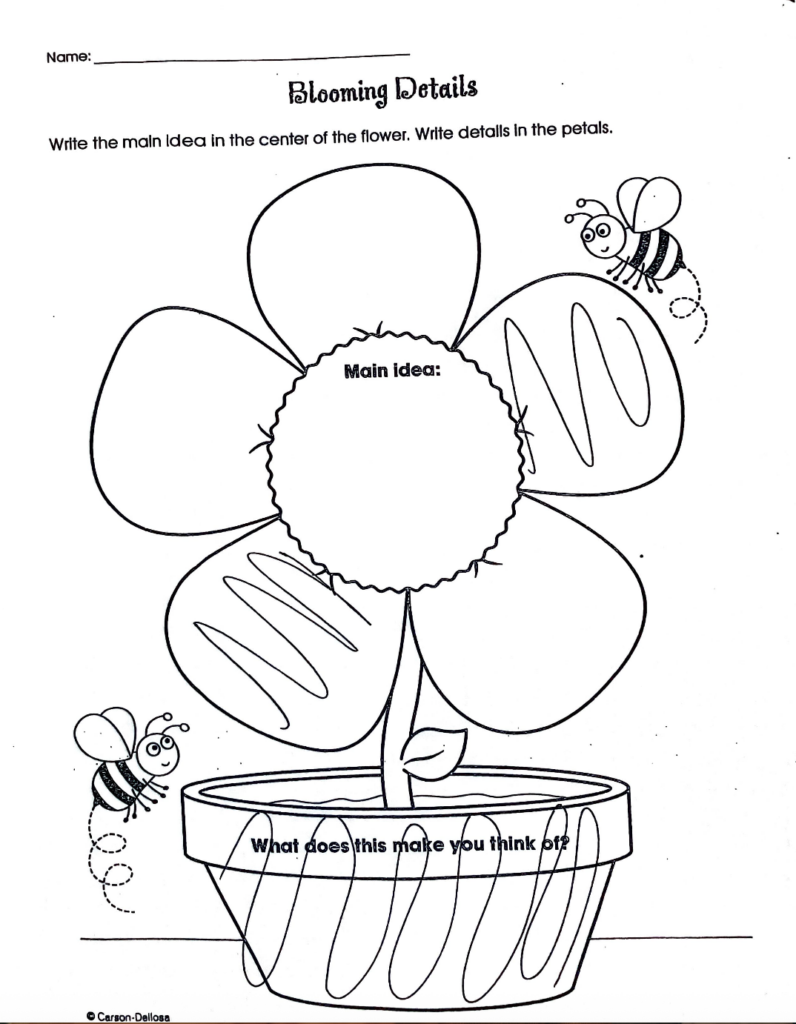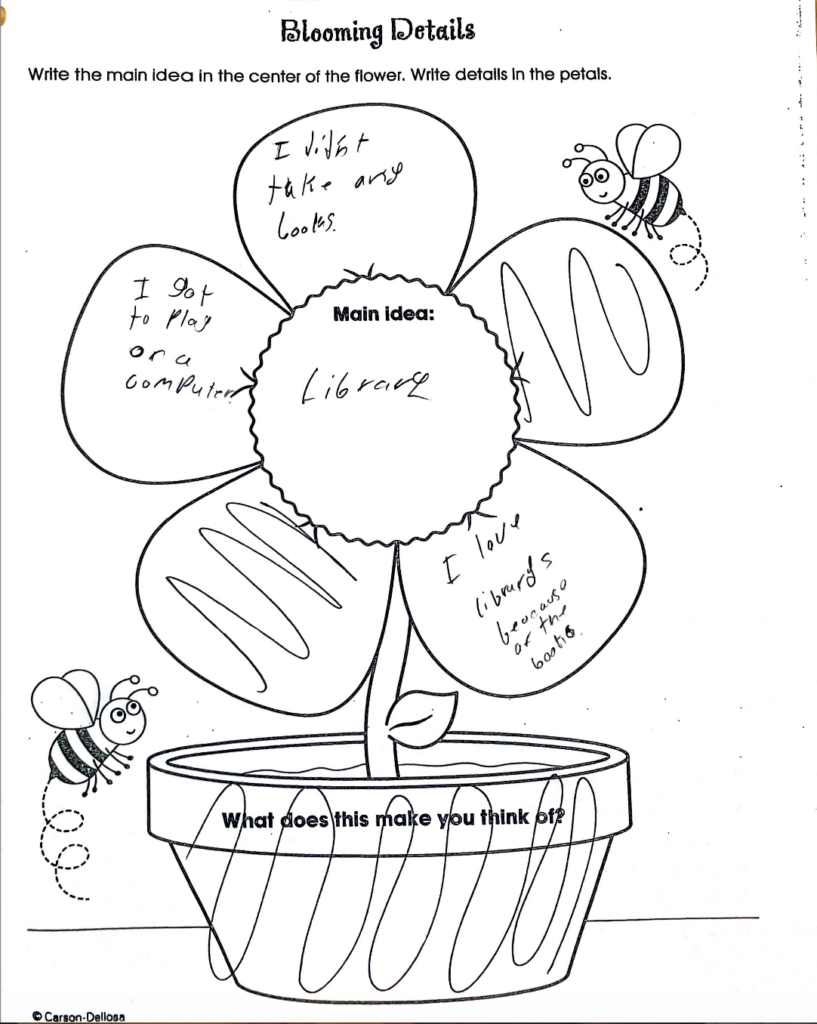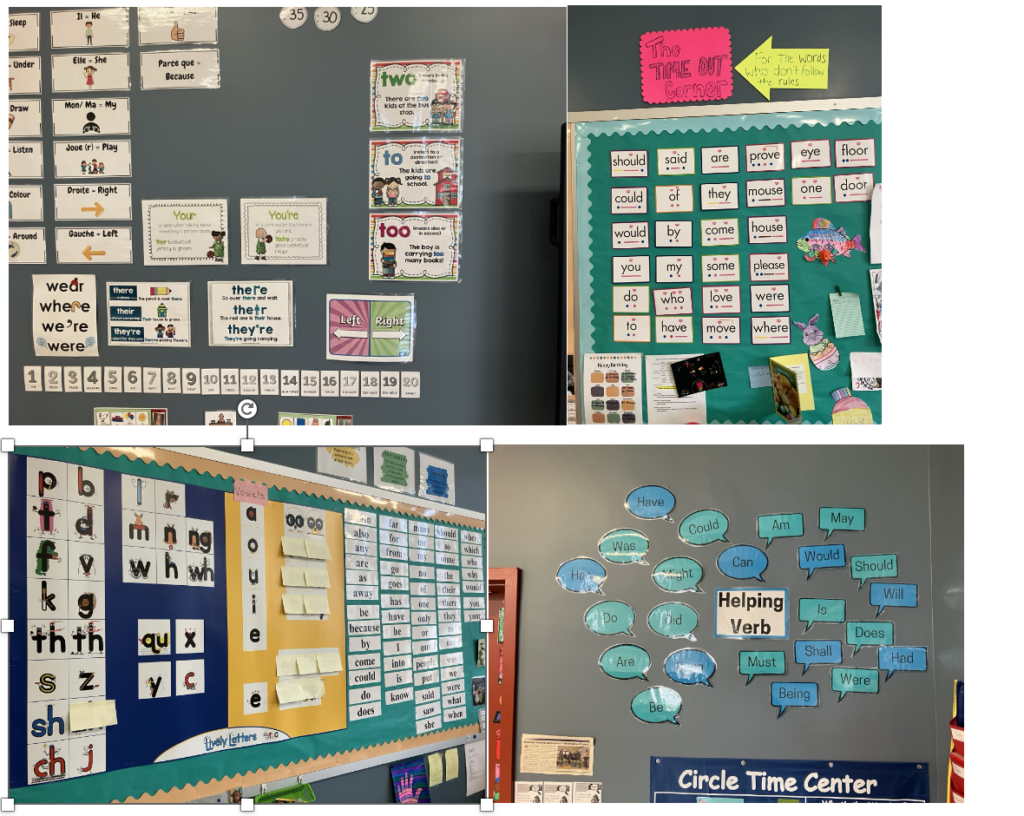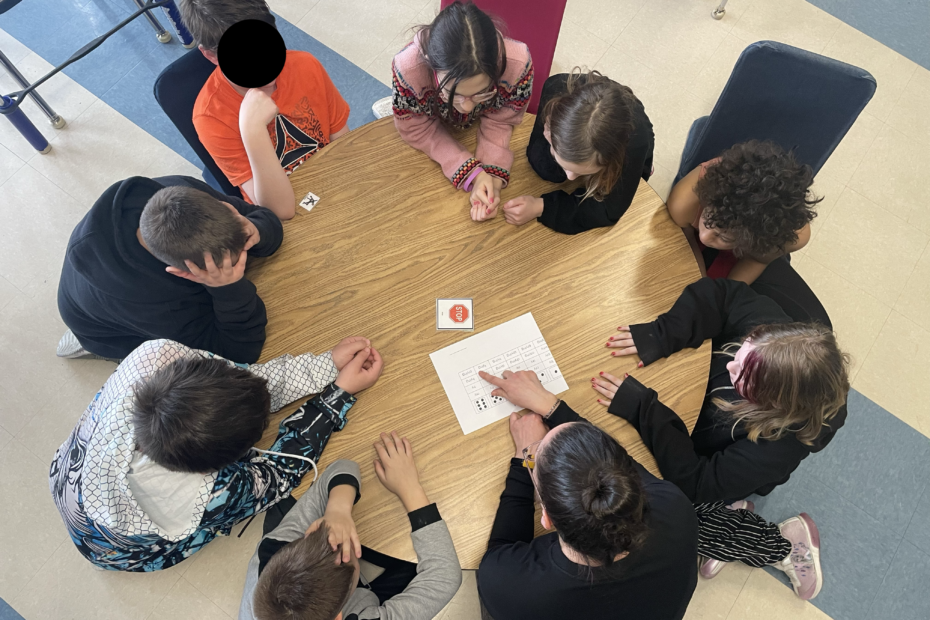By Julie Haché
After teaching in the mainstream classroom for several years and only dipping my toes into the world of “modification in the classroom”, I was reassigned to teach in a closed classroom, where modification became the name of the game (modification meaning that the students are working at least two years below grade level). In our school board, we have closed classrooms which are designated for students fitting a specific profile: they have been assigned a code that is learning or behaviour related, are working on a modified QEP curriculum, and socially and/or emotionally would benefit from a small class size. The composition of the class changes yearly depending on the needs within the school, and the number of students in the class varies based on the sum of the weighted codes.
Having students working on a modified curriculum is not new to the education system, but it can be intimidating, stressful and is not spoken of nearly enough. It is easy to get stuck inside our individual bubbles and silos, but when we step outside and share the strategies and approaches that prove successful for each of us in our respective classrooms, it makes challenging tasks, such as modifying, a little less daunting, and eventually seamless. The goal of this article is to step out of my silo and share some of the strategies and approaches that have been successful in my classroom, and which have made the idea of modifying curriculum for students a little less overwhelming.
In the closed classroom where I currently teach, I have ten students aged between grades one to six, working between levels pre-k to grade five, and all following the Quebec Education Program. Given the wide range of levels, I have spent the past five years building a repertoire of strategies and tools for modifying the curriculum to teach all of my students at their respective levels. Through a significant amount of professional development and choosing bits and pieces from different teaching methods, programs and approaches, teaching in my classroom doesn’t feel like modifying as much as it feels like just “teaching to my students’ levels and needs”, which is what I hope all teachers struggling with modification achieve (perhaps with inspiration from this article!).
A fact that I learned while doing my B. Ed., but which really hit home when I started teaching in this closed classroom, is that you can try to teach a student at a level that is higher than their current level of understanding until you’re blue in the face, but unless you give them the missing pieces to scaffold up to the concept you want achieved, they will not understand it. These “missing pieces” are what I am constantly trying to identify and teach to. Every year begins by looking at each of my students’ learning profiles, creating individualized programs with goals specifically targeted to their needs, and focusing my instruction to meet those needs. Across the subsequent paragraphs, I provide an overview of some of the reading and writing-based strategies that have been effective in my own teaching practice.
Reading Strategies
The Classroom Library
Updating the classroom library is one of the first things I did when teaching this class. Slowly over the years, and staying within the budget provided, I removed the books that were above my students’ decoding and comprehension levels and replenished them with new, level appropriate options. After researching a selection of high interest low vocabulary books, I found that there is a beautiful assortment of graphic novel series available (see Scholastic Graphic Novels, for instance).

Sample Graphic Novels
The fact that they look like chapter books really helped my students with their self-esteem and confidence, particularly when reading with peers at different levels. When choosing these graphic novels, my students got to vote amongst a selection of level-appropriate options. When the books arrived, we opened the boxes together, shared the excitement of that “new book feeling”, and dove into our new books!
It should also be mentioned that, in our class we don’t label the books or leveled bins using numbers or letters but instead, attribute random symbols. By doing so, it becomes less apparent which students are reading at a higher or lower level. Although children are intuitive and are able to identify who is struggling, the use of random symbols to identify the various book bins makes it less obvious and less important to identify.
Leveled Readers
To evaluate reading levels, our school board uses PM Benchmarks. Based on the student’s current benchmark level, I am able to associate the equivalent LLI Reader. On a weekly basis, each of my students chooses a reader at either their current level or one above. They are then asked to 1) read to themselves until they feel confident with the book, 2) read to an adult in the classroom, and finally, 3) write about the book by filling out a 5 Ws (who, what, when, where, why) worksheet. This activity is naturally modified to each student’s level.Adaptations can easily be made for the ways in which students’ respond to the five w’s as well: (e.g., writing in full sentences, writing in point form, using technology, speech-to-text, or even providing verbal responses).

Sample 5 Ws Worksheet
Good Fit Books
Previously, when taking my students to the library, I would struggle with the book selections some of them would make—some were above their reading level, for instance, or too easy to provide a challenge. In response, we started discussing the importance of “good fit books”: books that are at an appropriate level (or just a touch challenging) for decoding as well as comprehension, and with a topic of interest to the student. In order to allow for the perfect combination of “good fit” independent books, all the while allowing students the opportunity to also engage in freedom of choice, we increased the number of books my students could borrow from the library from two to four: two books for school (one English and one French) that are selected with my assistance, and two books for home (also one English and one French) that students are able to choose on their own.
Readers’ Theatre
There are a multitude of reading activities that students can participate in, which can easily be modified. A reading activity that my students love to engage in, and which can be modified with ease, is Readers’ Theatre. When searching for a specific Readers’ Theatre for my students, I look for one that has a wide range in the level of difficulty of reading, and with varied reading roles that range from several sentences to simply making basic sounds or reading a short line as part of a group. Everyone is participating in the same activity, at their modified level, without feeling the different.
Paired Reading
When looking at participating in paired reading with other classes in the school, my class of low-level readers is always paired with a preschool class (k4 or k5); this ensures that my students are the stronger readers in the pairs. They choose books from our class to bring to the activity so that they are certain to have books that they know they can read confidently. If we were to be paired with classes above the pre-school level, my students would no longer have the guarantee that they were the stronger readers and could end up in a situation where they were being read to, sometimes by students even younger than they are, which could greatly impact their self-esteem and confidence as learners.
Epic Reading
Often students who are reading below level have a limited vocabulary as they are not exposed to the expanded vocabulary that you would typically find in books suited for higher achieving readers of the same age. With this in mind, we dedicate time in our weekly schedule for reading books on the Epic website, where the students can choose to read audiobooks. This gives them the exposure to more advanced books (and the vocabulary) that they otherwise couldn’t read independently.
Lively Letters & UFLi
Although we are often encouraged to adopt a specific program and follow it to a tee, I prefer taking bits and pieces from various professional development opportunities or programs and combining them together to best meet the needs of my students. In our class, we combine the Lively Letters Program and UFLi to help my students with their phonemic awareness and their ability to decode, encode and play around with words. Through Lively Letters, I introduce the students to each of the sounds and the story that accompanies it, and through UFLi we work on the decoding activities and fluency passages. Through both programs combined, for each sound explored, the students are given an opportunity to: learn how to make the sound, practice reading and writing CVC words (consonant-vowel-consonant words, e.g. cat, dog, top, kit), play with sound combinations, write sentences containing words that include that sound, identify words within a text that have that sound, and practice reading a text.
This in-depth teaching and understanding of basic phonemic awareness fills in so many of the missing gaps for my students who struggle with reading and writing. I can’t expect students to read or write if they don’t understand the sounds that letters make. They can’t read chapter books if they don’t understand how to encode and decode. However, not all students struggle with these concepts. When working on these lessons, students who have mastered phonemic awareness work on other assignments, at their level, which they are able to complete independently. Students who struggle immensely with phonemic awareness and for whom the pace of the majority of the class is still too quick work in a small group with my special education technician, doing the same work at a slower pace, with adapted strategies and tools.
The aspect which I find most challenging when working with students on modified programs is the time management and planning that is required. Not all groups of students within the class require a focused lesson at the same time, or on the same topic. Using the resources and the people on your team strategically and to their maximum capacity is essential in maximizing your teaching time and making your day run smoothly.
Writing Strategies
In our class, we write in some form or other every single day, whether it is through a quick response about a book that was recently read, answering a writing prompt, or putting together a lengthier piece of writing. When it comes to writing in any form, my students often struggle to come up with ideas and expand on those ideas. To address this, we have incorporated different strategies to help the assignments seem less overwhelming, and also to help students break down the assignment and see it one step at a time.
Chit Chat Café
This year, I introduced my students to the “Chit Chat Café”. When I have a longer piece of writing that I want them to work on, we start with a Post-it note that I ask them to write three main ideas on in point form (for example: what are three things you did during Christmas break?). Once they have their three ideas, we come around a table for a discussion. I enjoy offering them some sort of treat, such as a hot chocolate, just to make the activity a little more exciting and to help with the buy-in. The students go around the table to discuss and build on the three ideas they jotted down. The first couple of times we tried this, I needed to help the class engage in conversation and ask one another meaningful questions. Once they got going, they asked wonderful questions that helped one another elaborate on their ideas and think of details related to their event.
The next step includes providing my students with a flower graphic organizer, which has three petals. In the center of the flower, they write one main idea from their Post-it. In the three petals surrounding the main idea, they write supporting details. For each paragraph that I want the students to write, they receive a separate flower graphic organizer. Once they have all of their “flowers” complete, they take out their journal and turn their flowers into three respective paragraphs. From there we add the flair that they have already learned through our other English language arts lessons (for example, adding adjectives and adverbs and editing their work). We then go over how to write an introduction and conclusion, and then they type up their final draft!


Sample Flower Graphic Organizer
After this activity, students who would previously struggle to write three sentences about any given topic write three paragraphs. Again, depending on the ability of the student, an activity like this can be modified while still allowing everyone to participate. The number of “flowers” (aka paragraphs) can be adjusted, and the quality of the sentences and the amount of detail expected can be increased or decreased easily. Adaptations can be made for this activity as well through the ways in which the student completes the assignment (e.g., Word-Q, Speech-to-text, scribe, etc).
Tools
Given that my students struggle so much with reading and writing, I am constantly on the lookout for tools that can help them complete their work as independently as possible. Over the years, we have worked with various technologies. We have found dictionaries tailored to my students’ level and we have filled our walls with a number of language tools for students (eg. the Lively Letters poster, Power Words, a list of “Heart” words, commonly used homophones). In our class, we are constantly evolving; we are adding, removing and altering tools and approaches that no longer serve us. Every year, I continue to search for new additions by participating in professional development opportunities where I am exposed to tools and strategies that I didn’t previously know about.

Images of our Classroom Walls
At the end of the day, the importance is in finding reading and writing activities that the students want to participate in. There isn’t one set of strategies that works for every student or every cohort; it constantly fluctuates and evolves. What works one year might be disastrous the next. Having the repertoire and the flexibility to try new approaches helps facilitate the modification process. When it comes to reading and writing, there are multiple ways that modification can be implemented in a discreet manner that doesn’t affect the self-esteem or confidence of the learner. When we take the time to identify the missing pieces to “make it click” for a student and we target our instruction to meet those needs, it allows the students to grow and learn. I encourage you to take a step out of your silo and share the strategies that are working for you and your students; this is how we grow as teachers and how we facilitate learning for all of our students.
